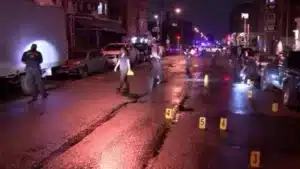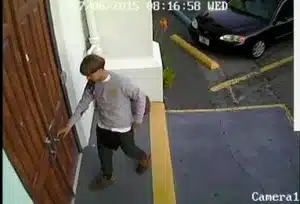Is Mass Shooting in the USA a Man-Made Disaster? 22 Shooting
Yes, mass shootings in the USA can be categorized as man-made disasters. Unlike natural disasters, which are typically caused by natural forces beyond human control, mass shootings are intentional acts of violence perpetrated by individuals or groups. These incidents involve the use of firearms to target and harm innocent people, resulting in loss of life, injuries, and widespread psychological trauma. The motives behind mass shootings may vary, but the intentional nature of these acts distinguishes them as man-made disasters.
At least 18 people were killed and 13 others wounded after a mass shooting in Maine. Lewiston police say Robert Card is a person of interest in the shooting. Officials say the 40 -years old, should be considered armed and dangerous.
The 22 Devastating Impact of Mass Shootings: Understanding the Tragic Reality
Two students opened fire at Columbine High School in Colorado, killing 12 students and a teacher before taking their own lives.
A student at Virginia Tech University shot and killed 32 people and wounded many others before committing suicide.
A gunman entered Sandy Hook Elementary School in Connecticut and killed 20 children and 6 staff members before taking his own life.
During a music festival in Las Vegas, a gunman fired from a hotel room, killing 58 people and injuring hundreds in the deadliest mass shooting in modern U.S. history.
A former student entered Marjory Stoneman Douglas High School in Florida and killed 17 students and staff members, sparking a nationwide movement for stricter gun control laws.
In Orlando, Florida, a shooter killed 49 people and wounded dozens more at the Pulse nightclub, targeting the LGBTQ+ community.

A gunman opened fire inside a movie theater in Aurora, Colorado, during a midnight screening, killing 12 people and injuring many others.
In Pittsburgh, Pennsylvania, an attacker entered the Tree of Life synagogue and killed 11 worshipers during a religious service.
-
Sutherland Springs church shooting (2017):
- A gunman entered a church in Sutherland Springs, Texas, and killed 26 people, including children and pregnant women.
-
San Bernardino shooting (2015):
A married couple opened fire at a holiday party in San Bernardino, California, killing 14 people and injuring several others.

A white supremacist entered Emanuel African Methodist Episcopal Church in Charleston, South Carolina, and killed nine African-American parishioners during a Bible study session.
A gunman targeted shoppers at a Walmart in El Paso, Texas, killing 23 people and injuring many others in an act of domestic terrorism motivated by white supremacist beliefs.
In Dayton, Ohio, a shooter killed nine people and injured multiple others in a busy entertainment district before being confronted and stopped by police within a minute of the first shot being fired.
A gunman opened fire at a country music bar in Thousand Oaks, California, killing 12 people, including a sheriff’s deputy, before taking his own life.
A military contractor carried out a shooting rampage at the Washington Navy Yard in Washington, D.C., killing 12 people and injuring several others before being killed by police.
A student opened fire at Santa Fe High School in Texas, killing 10 people, including students and teachers, and injuring others.
A U.S. Army major opened fire at Fort Hood military base in Texas, killing 13 people and injuring more than 30 others in a mass shooting that was later identified as an act of domestic terrorism.
A disturbed individual went on a shooting spree in Isla Vista, California, near the University of California, Santa Barbara, killing six people and injuring others before taking his own life.
A gunman targeted students and staff at Umpqua Community College in Oregon, killing nine people and injuring multiple others before being killed during a shootout with police.
A gunman opened fire at a King Soopers supermarket in Boulder, Colorado, killing 10 people, including a police officer, and leaving the community in shock and mourning.
A former employee at a FedEx facility in Indianapolis, Indiana, opened fire, killing eight people and injuring several others before taking his own life.
A series of shootings occurred at three spas in the Atlanta, Georgia area, resulting in the deaths of eight people, six of whom were of Asian descent. The incident heightened concerns about the rise in anti-Asian hate crimes in the United States.

Mass shootings, also known as mass killings or mass homicides, have become an unfortunate and alarming phenomenon in our society. The rise in such incidents has sparked widespread concern and calls for action. In this article, we will dive into the topic of mass shootings, explore their devastating impact, analyze their underlying factors, and discuss potential solutions. By shedding light on this issue, we hope to raise awareness and contribute to the ongoing conversation surrounding gun violence and public safety.
Understanding Mass Shootings
What is a Mass Shooting?
A mass shooting refers to an incident in which multiple individuals are shot and often killed by a single perpetrator or a group of individuals. These tragic events typically occur in public places, such as schools, workplaces, or community gatherings, where innocent people gather, unsuspecting of the imminent danger they face.
The Human Toll
The toll taken by mass shootings is immeasurable. Lives are lost, families are shattered, and communities are left traumatized. Each victim represents a unique story, dreams left unfulfilled, and loved ones forever impacted by their absence. It is essential to remember that behind the staggering statistics lie real people who have experienced unimaginable tragedy.
Analyzing the Factors
Complex Interplay of Factors
The factors contributing to mass shootings are multifaceted and interconnected. Understanding these factors is crucial to address the issue effectively. While each case is unique, several recurring themes and patterns have emerged through careful analysis.
Mental Health Challenges
Mental health plays a significant role in mass shootings. In many instances, perpetrators have exhibited signs of distress or psychological disorders. Identifying individuals who are at risk and ensuring access to proper mental healthcare is paramount to prevent potential acts of violence.
Socioeconomic Factors
Socioeconomic factors, such as poverty, unemployment, and social isolation, can contribute to a sense of hopelessness and desperation. These circumstances may amplify existing feelings of anger, frustration, and alienation, potentially pushing individuals towards violence as a perceived solution to their problems.
Access to Firearms
Easy access to firearms exacerbates the severity and lethality of mass shootings. The availability of high-powered weapons allows perpetrators to carry out devastating acts of violence with alarming efficiency. Stricter gun control measures and comprehensive background checks are essential to curbing the accessibility of firearms.
Seeking Solutions
Comprehensive Mental Health Support
Investing in accessible and affordable mental health services is vital for identifying and addressing potential risks. Early intervention, counseling, and support can make a significant difference in individuals’ lives and help prevent them from resorting to violence.
Community Engagement and Education
Promoting community engagement and education is key to fostering a safer society. By actively involving community members, schools, and workplaces in conversations about violence prevention and conflict resolution, we can create an environment that prioritizes understanding, empathy, and early intervention.
Gun Control Measures
Implementing stricter gun control measures is crucial for mitigating the devastating impact of mass shootings. Policies that require comprehensive background checks, limit access to high-capacity firearms, and encourage responsible gun ownership can contribute to a safer society.
Understanding the Devastating Reality of Mass Shootings in the USA
Mass shootings in the USA have become a tragic and concerning issue that demands our attention. In this article, we will explore the topic of mass shootings in the USA, examining their impact, analyzing contributing factors, and discussing potential solutions. By shedding light on this distressing phenomenon, we aim to increase awareness and contribute to the ongoing dialogue on gun violence and public safety.
Unveiling the Horrors of Mass Shootings
Defining Mass Shootings in the USA
When we talk about mass shootings in the USA, we refer to incidents in which multiple individuals are shot, often resulting in fatalities, caused by a single perpetrator or a group of individuals. These heartbreaking events typically occur in public spaces, such as schools, workplaces, or community gatherings, where innocent people gather, unaware of the imminent danger they face.
The Human Toll
The toll taken by mass shootings is immeasurable. Each victim represents a unique life cut short, dreams left unfulfilled, and loved ones forever impacted by their absence. Behind the grim statistics lie real people who have experienced unimaginable tragedy. It is vital to remember the human aspect amidst the overwhelming numbers.
Analyzing Contributing Factors
Understanding the Complex Puzzle
Mass shootings in the USA are the result of various interconnected factors. To address this issue effectively, we must comprehend these factors and their interplay. While each case is unique, careful analysis has revealed recurring patterns and themes that contribute to these horrifying incidents.
Mental Health and Mass Shootings
Mental health plays a significant role in mass shootings. Many perpetrators exhibit signs of distress or mental disorders. Identifying individuals at risk and ensuring access to appropriate mental healthcare are crucial steps in preventing potential acts of violence.
Societal Influences and Vulnerabilities
Societal factors such as social isolation, economic challenges, and the glorification of violence can create an environment that fosters anger, frustration, and desperation. Addressing these vulnerabilities through community support, access to education, and opportunities for growth can help prevent individuals from resorting to violence.
The Role of Firearms
The accessibility of firearms exacerbates the severity and lethality of mass shootings. The presence of high-powered weapons enables perpetrators to carry out devastating acts of violence with alarming efficiency. Stricter gun control measures, comprehensive background checks, and responsible ownership regulations are essential for curbing the ease of access to firearms.
Seeking Solutions to the Mass shooting in the USA
Prioritizing Mental Health Support
Investing in accessible and affordable mental health services is crucial to identifying and addressing potential risks. Early intervention, counseling, and support can significantly impact individuals’ lives and help prevent them from resorting to violence.
Fostering Community Engagement and Education
Promoting community engagement and education is pivotal in creating a safer society. By actively involving community members, schools, and workplaces in conversations about violence prevention, conflict resolution, and empathy, we can establish an environment that prioritizes understanding and early intervention.
Strengthening Gun Control Measures
Implementing stricter gun control measures is imperative to mitigate the devastating impact of mass shootings. Policies that enforce comprehensive background checks, restrict access to high-capacity firearms, and promote responsible gun ownership can contribute to a safer society.
Conclusion
Mass shootings represent a tragic reality that we must confront as a society. By understanding the factors contributing to these devastating events, we can work towards comprehensive solutions that prioritize mental health support, community engagement, and responsible gun control measures. It is only through a concerted effort, backed by empathy and understanding, that we can strive for a future where mass shootings are no longer a recurring nightmare, but a distant memory.

